By Pete Ryan
7 minute read
Relationship-led growth (RLG) is a GTM strategy that builds strong relationships with investors, advisors, internal executives, partners, and all other stakeholders to exchange introductions to key prospects and customers.
This approach is based on the idea that by fostering positive, mutually beneficial connections with these key groups, a salesperson can unlock doors that would be otherwise closed.
Relationship-led growth can take many forms, including developing strategic partnerships, offering and requesting referrals, and engaging in active relationship-building efforts.
So, how is relationship-led growth different than other GTM strategies?
Let’s get started.
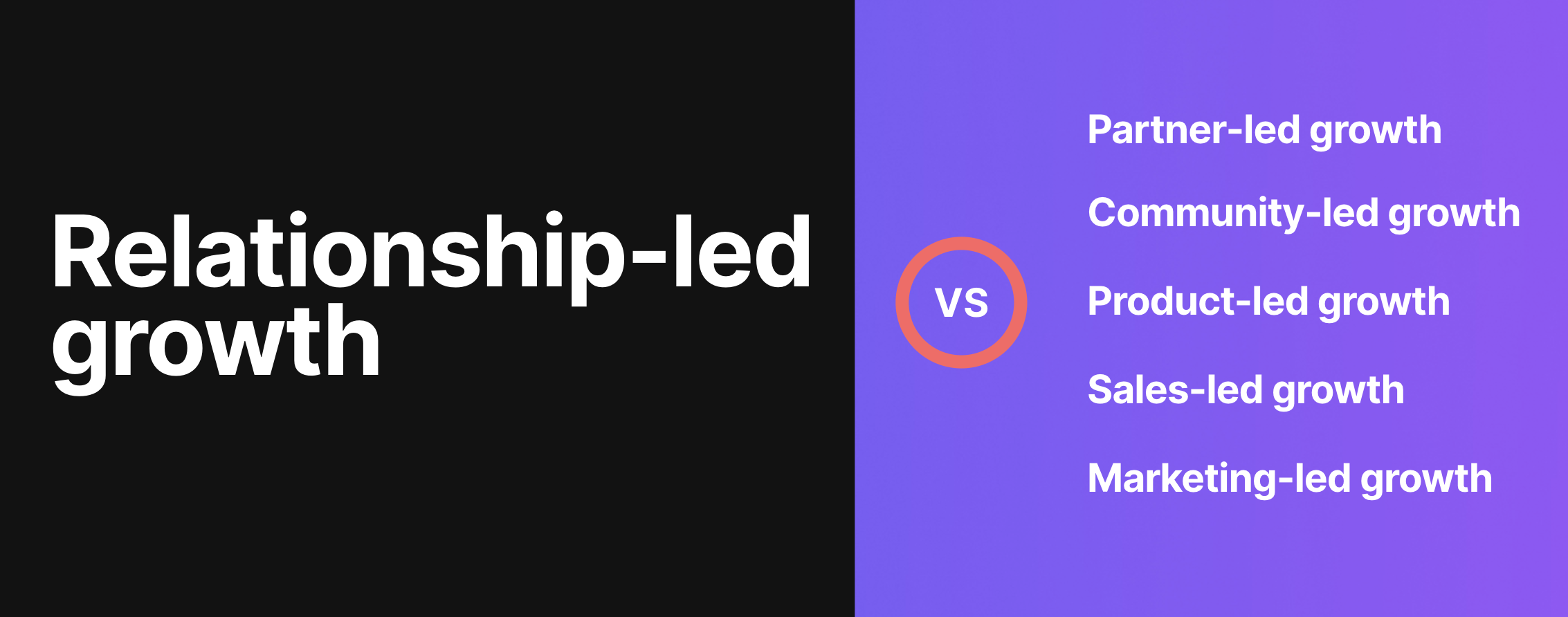
Partner-led growth vs. Relationship-led growth?
Partner-led growth focuses on building strategic partnerships with other companies or individuals to drive revenue. This can include partnerships with:
- ISV (independent software vendor)
- A company that develops software products and sells them to customers.
- Example: Atlassian
- A company that develops software products and sells them to customers.
- VAR (value added reseller)
- A company that resells products with added value through customization, integration, training, and support.
- Example: CDW
- A company that resells products with added value through customization, integration, training, and support.
- SI (system integrator)
- A company that combines technology components to create complete solutions for customers through consulting, design, implementation, and support.
- Example: Accenture
- A company that combines technology components to create complete solutions for customers through consulting, design, implementation, and support.
- MSP (managed services provider)
- A company that offers ongoing IT support and management, taking over responsibility for a customer's infrastructure and systems.
- Example: NTT Data
- A company that offers ongoing IT support and management, taking over responsibility for a customer's infrastructure and systems.
In recent years, it's worth mentioning that alliance partnerships have seen significant growth attributed to the flourishing API economy, greater openness to co-market and co-sell, and the need for new GTM channels.
These partnerships often aim to expand the company's reach and increase revenue by leveraging the partner's resources, customer base, or expertise. This growth strategy is centralized, "company-to-company."
Relationship-led is a broader strategy emphasizing building solid relationships with all stakeholders to unlock introductions and sales insights resulting in new pipeline and deal acceleration. Also to note, Relationship-led is decentralized, "peer to peer."
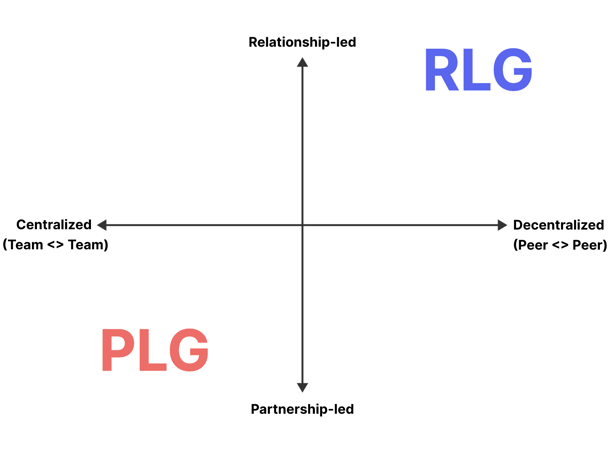
When utilized correctly, Partner-led and Relationship-led can complement each other and act as a force multiplier for the business.
The sales team can use the relationships built through Relationship-led to prospect and sell more effectively. In contrast, the partnerships team can leverage these relationships to secure more lucrative and impactful partnerships and vice-versa.
Community-led growth vs. Relationship-led growth?
Community-led growth is a strategy based on the idea that by fostering a sense of belonging among customers and users, a company can drive growth and customer success.
Community-led can take many forms, such as establishing an online community, hosting events, or engaging in active community-building efforts. Some communities center around a particular company or product, while others focus on a specific skill or occupation. When it’s working well, it becomes a bottom-up approach where the community itself is the driving force for growth.
In recent years, Community-led has grown in popularity as the buyer journey has changed— software is no longer sold but adopted, creating an opening for Community-led to foster.
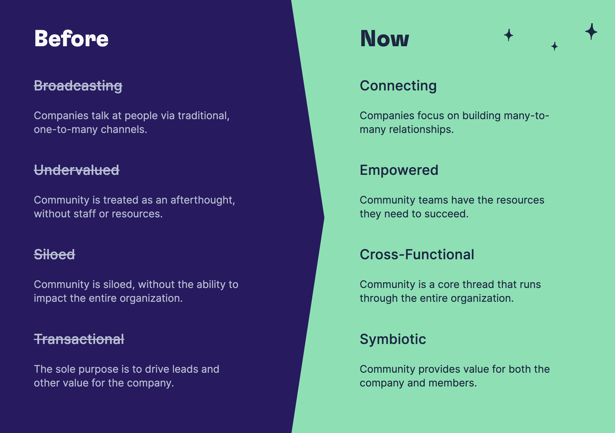
Community leaders are actively building online communities on platforms such as:
- Slack: there is a proliferation of B2B sales and marketing communities.
- Discord: a growing number of B2C communities.
- Github: many product and engineering communities.
Both approaches are valuable, but the focus of each is different. For example, community-led growth is about building and nurturing a sense of connection among community members in a centralized community. In contrast, Relationship-led growth takes a more direct, decentralized approach that is “peer to peer” in building relationships and making introductions.
Lastly, most will agree that Community-led can be classified under marketing, while Relationship-led tends to fall under sales.
Product-led growth vs. Relationship-led growth?
Product-led growth focuses on creating a product that is so compelling that it drives growth on its own.
This is achieved by providing a frictionless user experience, a high-quality product, and a robust customer engagement model.
Companies that adopt PLG have a low-touch or no-touch sales process, where customers can try for free, buy, and use the product without needing human interaction. An example of a company that leverages Product-led is Trello.
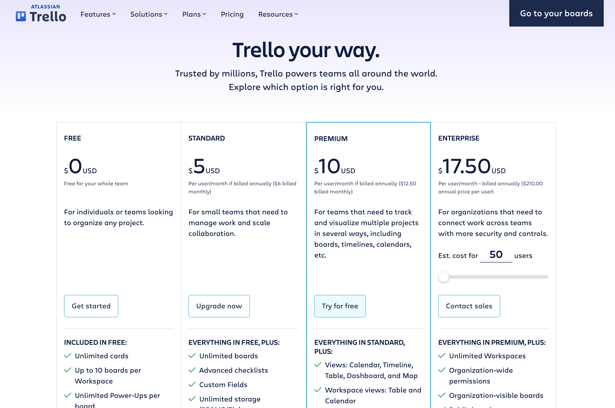
Keep in mind not all software businesses are suitable for product-led. Some may require a top-down sales approach. The factors considered before implementing product-led include product type, target audience, and market conditions.
Implementing both relationship-led growth and product-led growth together can be a powerful combination. Product-led growth attracts and engages users, and Relationship-led allows the sales team to sell top-down to the buyer in the most strategic way possible.
Sales-led growth vs. Relationship-led growth?
Sales-led growth focuses on increasing B2B revenue, usually through top-down tactics that emphasize pipeline generation. The main goal is to generate leads via email, InMail, and cold-calling.
Cold prospecting in B2B SaaS has become less effective in recent years due to the prevalence of email automation. As a result, this has caused an increase in noise and competition in the market, making it harder for companies to stand out.
As more and more companies secure funding and launch similar sales campaigns, they're all fighting for the same pool of potential customers.
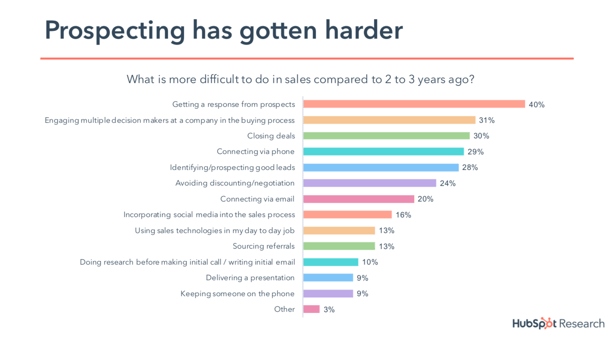
This saturation has made it increasingly more work to get the attention of prospective clients and generate leads through cold outreach.
To be successful in the current business environment, companies need to find new and innovative ways to reach potential customers and differentiate themselves from their competitors.
Ultimately, staying ahead of the curve and adapting to changing market conditions is crucial to continue driving growth and success.
Listen... Both approaches can be necessary for a business but have different focuses and goals. For example, Sales-led stresses increasing leads through cold outreach tactics, while Relationship-led is about building strong and long-lasting connections with all stakeholders to unlock the most strategic path to the customer.
Marketing-led growth vs. relationship-led growth?
Marketing-led growth focuses on increasing awareness and demand for a company's products through marketing tactics such as:
- Content marketing: Creating content to attract and retain a clearly defined target audience.
- Email marketing: Sending targeted emails to customers or prospects.
- Social media marketing: Promoting a product through social media channels like LinkedIn, TikTok, or Instagram.
- Influencer marketing: Partnering with influential individuals to promote a product.
- (SEO) Search engine optimization: Optimizing a website to rank higher in search engine results and drive organic traffic.
- Events: Participating in or hosting conferences and events to meet potential prospects and customers face-to-face.
- Direct mail: Sending physical mail or gifts to customers or prospects.
The goal of Marketing-led is to generate leads and convert them into customers.
In recent years, B2B companies have experienced increased customer acquisition costs as traditional marketing methods are becoming less effective in reaching and engaging potential customers. As a result, companies have to spend more money to acquire new customers.
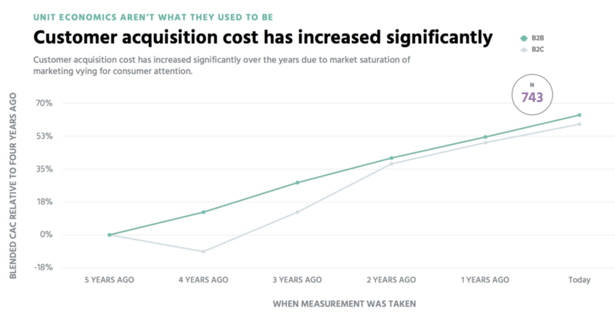
This shift can be attributed to several factors, such as an increase in competition, the growth of technology, and changes in consumer behavior.
Both approaches can be valuable, but they have different focuses. Marketing-led focuses on increasing awareness and demand, while Relationship-led focuses on building strong and long-lasting connections with all stakeholders to unlock introductions.
In conclusion
Although all of these different channels can be effective, many companies are looking to Relationship-led, not as a way to replace any one medium, but to take some of the pressure off of their existing channels, especially their traditional sales-led and market-led channels.
Hifive is a platform that aims to unlock relationship-led growth for go-to-market teams. It helps companies identify and leverage the relationships to drive new business pipelines through sharing sales introductions and tracking progress, all in one place.
Posted August 24, 2023
Join the relationship-led movement
Get introductions with our relationship-led Chrome extension